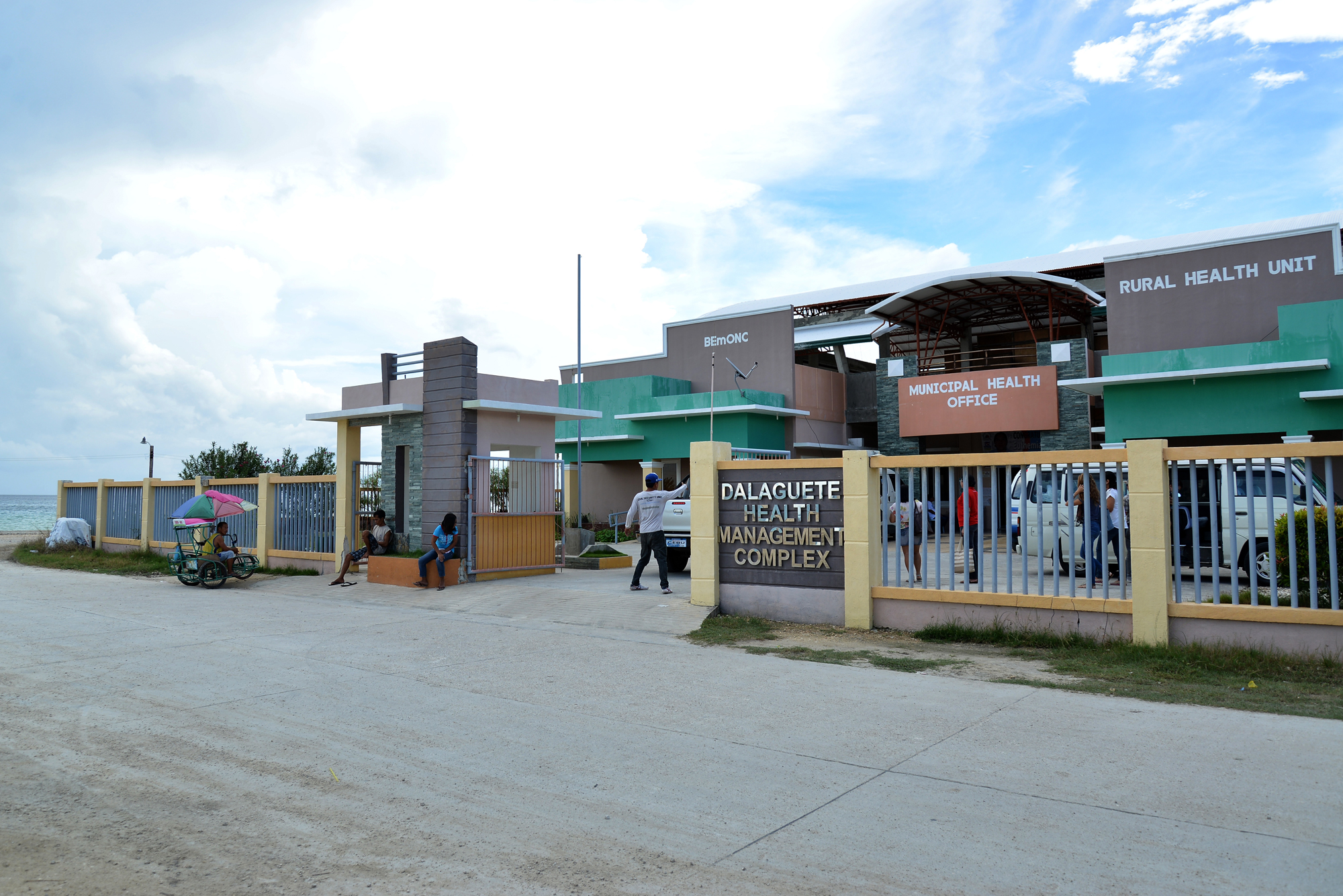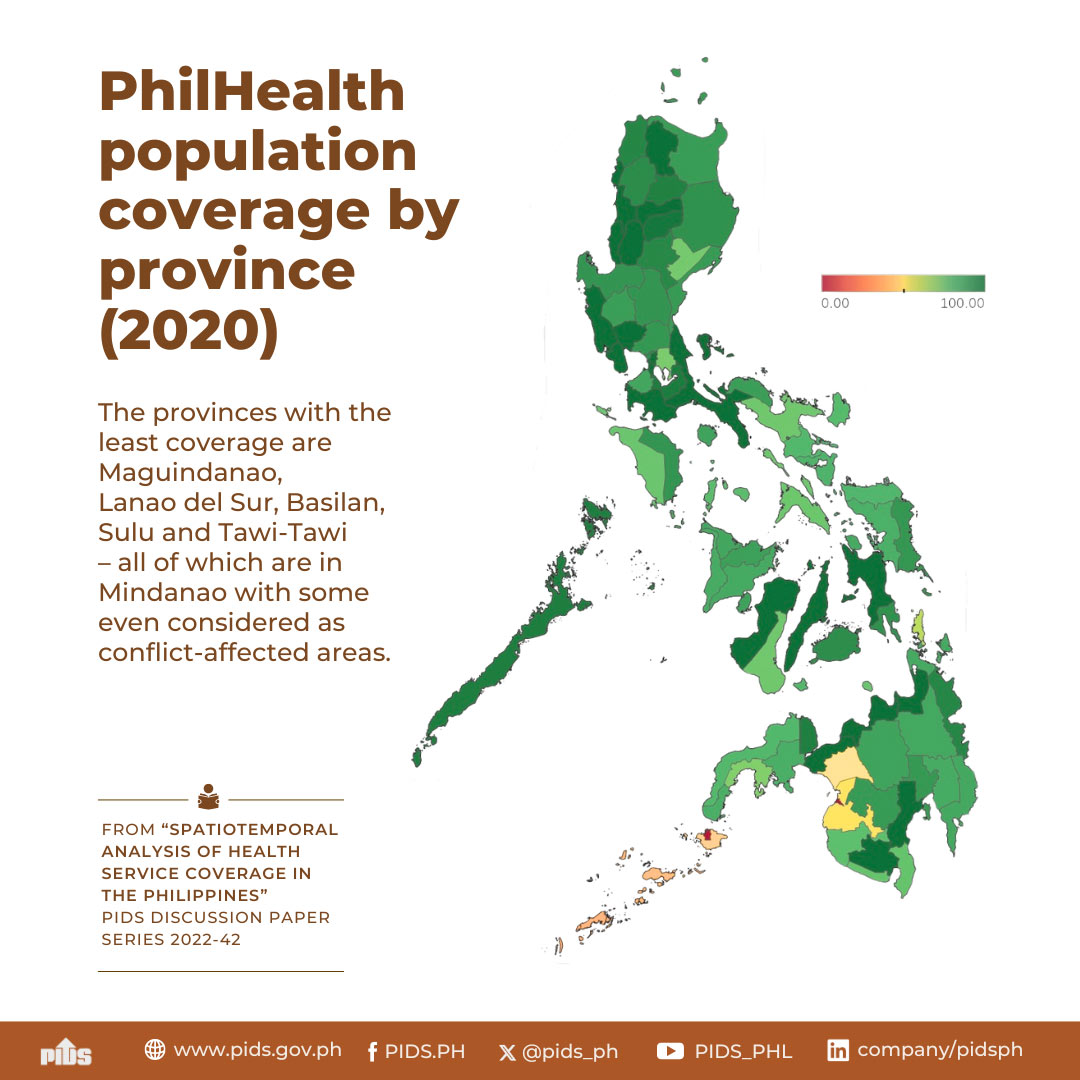
A study by state think tank Philippine Institute for Development Studies urges the Department of Health to address serious flaws and challenges in the implementation of its Health Facilities Enhancement Program (HFEP).
The research team of Oscar F. Picazo, Ida Marie T. Pantig, and Nina Ashley O. dela Cruz released their findings in a policy note titled, "More than infrastructure and equipment: Process evaluation of the Health Facilities Enhancement Program". Their evaluation of the DOH program revealed gaps in implementing practices in medical infrastructure.
The problematic areas they identified included service delivery, commissioned contracting, funding for building facilities, coordination, and facility licensing. Addressing the problems in these areas, urged the authors, will help improve the management of the HFEP.
Good program, weak implementation
An initiative by the Aquino administration, the HFEP was designed to provide "the largest capital investment in recent memory" to address the stagnant capital stock of public health facilities. The end goal was to build more health facilities, or improve the capabilities and expand the capacities of existing ones, so that every Filipino in every corner of the Philippines is given immediate access to medical and health services.
The study surveyed 83 percent of 37 health facilities across the provinces of Tarlac, Quezon, Catanduanes, Capiz, Surigao del Sur, and Zamboanga del Norte, which amounted to 19 infirmaries and hospitals, and 18 rural health units and birthing centers.
Forty-five percent have proven functional, 24 percent were only partially functional, and 14 percent were not functional at all. The functionality problems varied per facility, and they arose either from difficulties with physical infrastructure or from shortcomings of the services infrastructure.
Physical infrastructure problems include lack of access to electricity, construction defects, delays in construction, dysfunctional equipment, and improper maintenance or failure to deliver certain medical equipment. Services infrastructure problems include unavailability of doctors, problems with accreditation, and lack of proficiency training for midwives.
The authors identified the lack of national and regional health infrastructure plan as critical sources of these problems. There was lack of proper information and systematic prioritization when it came to upgrading and construction of medical infrastructure. Planning and coordination among health facilities and service providers in a particular area was also missing.
Another major cause of the HFEP's shortcomings involved the process of acquiring contractors.
"Health facilities under the HFEP were funded and contracted individually," revealed the study, which proved "unwieldy, time consuming, management intensive and uneconomical".
Commissioned contracting is preferable, whereby "a group of projects is pooled together and contracted out as a 'lot' or 'tranche' to allow contractors to economize on planning and design, bulk procurement of inputs, construction, monitoring, and equipping."
In practice, the design, construction, and equipping processes were individually commissioned, making coordination and sequencing of deliverables problematic.
"Individual infrastructures were built one by one, with inputs purchased locally from retail suppliers instead of procured wholesale under bulk procurement arrangements," the authors observed.
Constant back-and-forth coordination between the HFEP project staff and all involved parties and stakeholders over the strategic planning and design approval wasted precious time. The lack of strategic direction and the poor communication between health facilities and licensing units became a problem in ensuring the quality of facilities.
The decision to employ "small, incremental multiyear funding" also contributed to further fragmentation and delay of construction.
The project also encountered problems with licensing standards, affecting space and equipment requirements, quality of work, and facility staffing.
In summary, poor planning choices and poor coordination led to a significant percentage of health facilities being underused, only partially functional, or not functional at all.
Recommendations to improve HFEP implementation
The key to a better HFEP is improving coordination at all levels. It may also help to establish a manual operations for the entire project.
The authors also recommended establishing a civilian, health sector version of a SWAT team to address extraordinary situations of specific technical nature.
Commissioned contracting would also eliminate the fragmentation. The protraction of deliverables would be reduced if the incremental, multiyear infrastructure funding is replaced by a "finish one-at-a-time" funding scheme.
"DOH, as financier, will only be dealing with fewer contractors, and the commissioned contractors will take on the responsibility of construction monitoring," the authors added. ###
If you want to learn more about HFEPs, you may access the study's Policy Note here.
The research team of Oscar F. Picazo, Ida Marie T. Pantig, and Nina Ashley O. dela Cruz released their findings in a policy note titled, "More than infrastructure and equipment: Process evaluation of the Health Facilities Enhancement Program". Their evaluation of the DOH program revealed gaps in implementing practices in medical infrastructure.
The problematic areas they identified included service delivery, commissioned contracting, funding for building facilities, coordination, and facility licensing. Addressing the problems in these areas, urged the authors, will help improve the management of the HFEP.
Good program, weak implementation
An initiative by the Aquino administration, the HFEP was designed to provide "the largest capital investment in recent memory" to address the stagnant capital stock of public health facilities. The end goal was to build more health facilities, or improve the capabilities and expand the capacities of existing ones, so that every Filipino in every corner of the Philippines is given immediate access to medical and health services.
The study surveyed 83 percent of 37 health facilities across the provinces of Tarlac, Quezon, Catanduanes, Capiz, Surigao del Sur, and Zamboanga del Norte, which amounted to 19 infirmaries and hospitals, and 18 rural health units and birthing centers.
Forty-five percent have proven functional, 24 percent were only partially functional, and 14 percent were not functional at all. The functionality problems varied per facility, and they arose either from difficulties with physical infrastructure or from shortcomings of the services infrastructure.
Physical infrastructure problems include lack of access to electricity, construction defects, delays in construction, dysfunctional equipment, and improper maintenance or failure to deliver certain medical equipment. Services infrastructure problems include unavailability of doctors, problems with accreditation, and lack of proficiency training for midwives.
The authors identified the lack of national and regional health infrastructure plan as critical sources of these problems. There was lack of proper information and systematic prioritization when it came to upgrading and construction of medical infrastructure. Planning and coordination among health facilities and service providers in a particular area was also missing.
Another major cause of the HFEP's shortcomings involved the process of acquiring contractors.
"Health facilities under the HFEP were funded and contracted individually," revealed the study, which proved "unwieldy, time consuming, management intensive and uneconomical".
Commissioned contracting is preferable, whereby "a group of projects is pooled together and contracted out as a 'lot' or 'tranche' to allow contractors to economize on planning and design, bulk procurement of inputs, construction, monitoring, and equipping."
In practice, the design, construction, and equipping processes were individually commissioned, making coordination and sequencing of deliverables problematic.
"Individual infrastructures were built one by one, with inputs purchased locally from retail suppliers instead of procured wholesale under bulk procurement arrangements," the authors observed.
Constant back-and-forth coordination between the HFEP project staff and all involved parties and stakeholders over the strategic planning and design approval wasted precious time. The lack of strategic direction and the poor communication between health facilities and licensing units became a problem in ensuring the quality of facilities.
The decision to employ "small, incremental multiyear funding" also contributed to further fragmentation and delay of construction.
The project also encountered problems with licensing standards, affecting space and equipment requirements, quality of work, and facility staffing.
In summary, poor planning choices and poor coordination led to a significant percentage of health facilities being underused, only partially functional, or not functional at all.
Recommendations to improve HFEP implementation
The key to a better HFEP is improving coordination at all levels. It may also help to establish a manual operations for the entire project.
The authors also recommended establishing a civilian, health sector version of a SWAT team to address extraordinary situations of specific technical nature.
Commissioned contracting would also eliminate the fragmentation. The protraction of deliverables would be reduced if the incremental, multiyear infrastructure funding is replaced by a "finish one-at-a-time" funding scheme.
"DOH, as financier, will only be dealing with fewer contractors, and the commissioned contractors will take on the responsibility of construction monitoring," the authors added. ###
If you want to learn more about HFEPs, you may access the study's Policy Note here.












